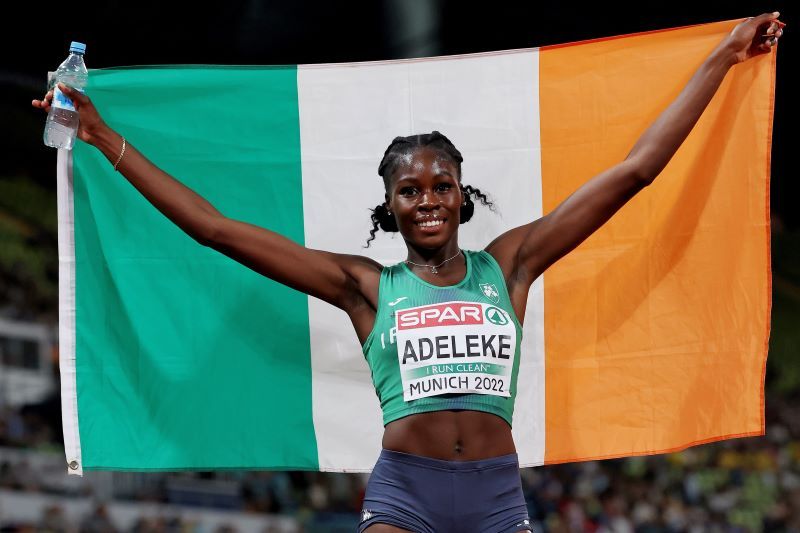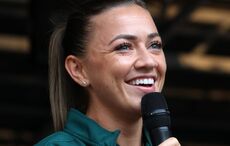Mine that Bird, Kentucky Derby winner and runner up in the Preakness, is going to post tomorrow at the Belmont Stakes. But did you know that Irish blood runs though the veins of the speedy colt? Maybe that is why the public loves this horse!
The colt won the first leg of the Triple Crown at the Kentucky Derby and put on a great show at the Preakness Stakes to finish runner to the great filly Rachel Alexandra. Tomorrow, Calvin Borel is back on board Mine that Bird (he chose to ride Rachel Alexandra at the Preakness), and the dynamic duo who stormed up the inside rail at Churchill Downs will fancy their chances in the 141st running of the Belmont Stakes at the Belmonst Racetrack in Elmont, Long island.
Anyway,back to Mine that bird's Irish Ancestry! Here’s the story:
Going on the theory that every good horse has Irish bloodlines, I did a little investigation okay, a lot of “mining” into Mine That Bird's, and sure enough found that “the Bird” is not just any little horse, but is the descendant of a famous Irish ancestor called Birdcatcher.
Birdcatcher, known universally as Irish Birdcatcher, a chestnut colt, was born on the Curragh in 1833, in the Brownstown stud owned by Irish breeder George Knox. His sire was Sir Herculas, an Irish-bred stallion, and his dam was a small mare named Guiccioli,.
While Birdcatcher is considered to be Guiccioli, and Sir Herculas's most important son, his full brother, stallion Faugh-a-Ballach, and sister, Gramachree (1844), who were no slackers when it came to racing and passing on the bloodline.
Gramachree’s grandson Selim became the first winner of the Irish Derby in 1866, while Faugh-a-Ballagh, ("Faugh a Ballagh" is an Irish/Gaelic battle cry meaning "clear the way” which was famously used by the Irish Brigade in the American Civil War), became the first Irish-bred winner of an English classic when he won the St. Leger of 1844.
More important in terms of American racing, Faugh-A-Ballagh, was sire to Leamington, who in turn became the leading sire in America, and whose son Iroquois was the first American-bred winner of an English classic when he won the Derby and St. Leger Stakes in 1881.
Birdcatcher, meanwhile, got off to a shaky start. He almost died of a respiratory illness as a yearling, but he recovered and went on to a stellar racing career in Ireland and England.
He was also quite a stud. His sons and daughters produced a line of horses whose offspring are still winning races today, not least of all, Mine That Bird.
Chief among Birdcatcher’s sons, was The Baron (1842), known as “the slim and savage” due to his terrible temperament.
The Baron, a great racer, was an even better sire.
He fathered Stockwell and Rataplan out of the great mare Pocahontas, before being shipped to France where he sired three winners of the Prix de Diane, including the filly La Toucques (1860), who also won the French St. Leger Stakes, the Prix du Jockey Club, and the Grosser Preis von Baden.
Stockwell won the Newmarket Stakes, Great Yorkshire Stakes, St. Leger Stakes, Grand Duke Michael Stakes, Newmarket St. Leger, and the Whip but it was as a sire that Stockwell truly found his calling.
He became known as The Emperor of Stallions, and sons, including Doncaster and the sire Bend Or, were great producers, as were his daughters. Some of the well-known descendants of Stockwell are the legendary Man o’ War, Phalaris, Northern Dancer and Nasrullah.
According to some racing reports, over 70 percent of stakes winning horses in the late 1990s descend from Phalaris, through Northern Dancer (Mine that Bird's great-great-grandfather), Nasrullah, Turn-To, and Raise a Native.
The story goes back to Ireland in 1978, when Storm Bird, the Canadian-bred horse sired by Northern Dancer, was brought back to Ireland to be trained by Vincent O’Brien.
Storm Bird who became a champion in Ireland and England like his Irish ancestors, also went on to sire a daughter, Dear Birdy, who became Kentucky’s Broodmare of the Year (2004) having already given birth to Birdstone (2001), who in turn sired Mine That Bird (2006.)
And there you have it . . . From Birdcatcher to Mine That Bird, and one of the most exciting races in the history of the Kentucky Derby, when a 50-1 horse considered so not in the running that Tom Durkin, probably the only time in his career, missed the call as Mine That Bird under jockey Calvin “Bo-Rail” Borel streaked along on the inside in a gallant ride to win by 6 3/4 lengths.
Oh, wait -- the Disney connection!
Birdcatcher came into the ownership of William Disney, whose Lark Lodge was adjacent to Knox’s Brownstown Stud. (Perhaps George Knox thought the sickly yearling didn’t have a future.) William Disney (not a very common name in Ireland) may, or may not, have been related to Arundel Elias Disney (b.1801), great-grandfather of Walt Disney, who left Ireland for America in 1834.
From Birdcatcher to Mine That Bird:
Birdcatcher (Born: 1833)
The Baron (1842)
Stockwell (1849)
Doncaster (1870)
Bend Or (1877)
Bona Vista (1889)
Cyllene (1895)
Polmelus (1902)
Phalaris (1913)
Pharos (1920)
Nearco (1935)
Nearctic (1954)
Northern Dancer (1961)
Storm Bird (1978)
Dear Birdy (1987)
Birdstone (2001)
Mine That Bird (2006)
Note: I "mined" many sources for this item, chief among them was TBheritage.com




Comments